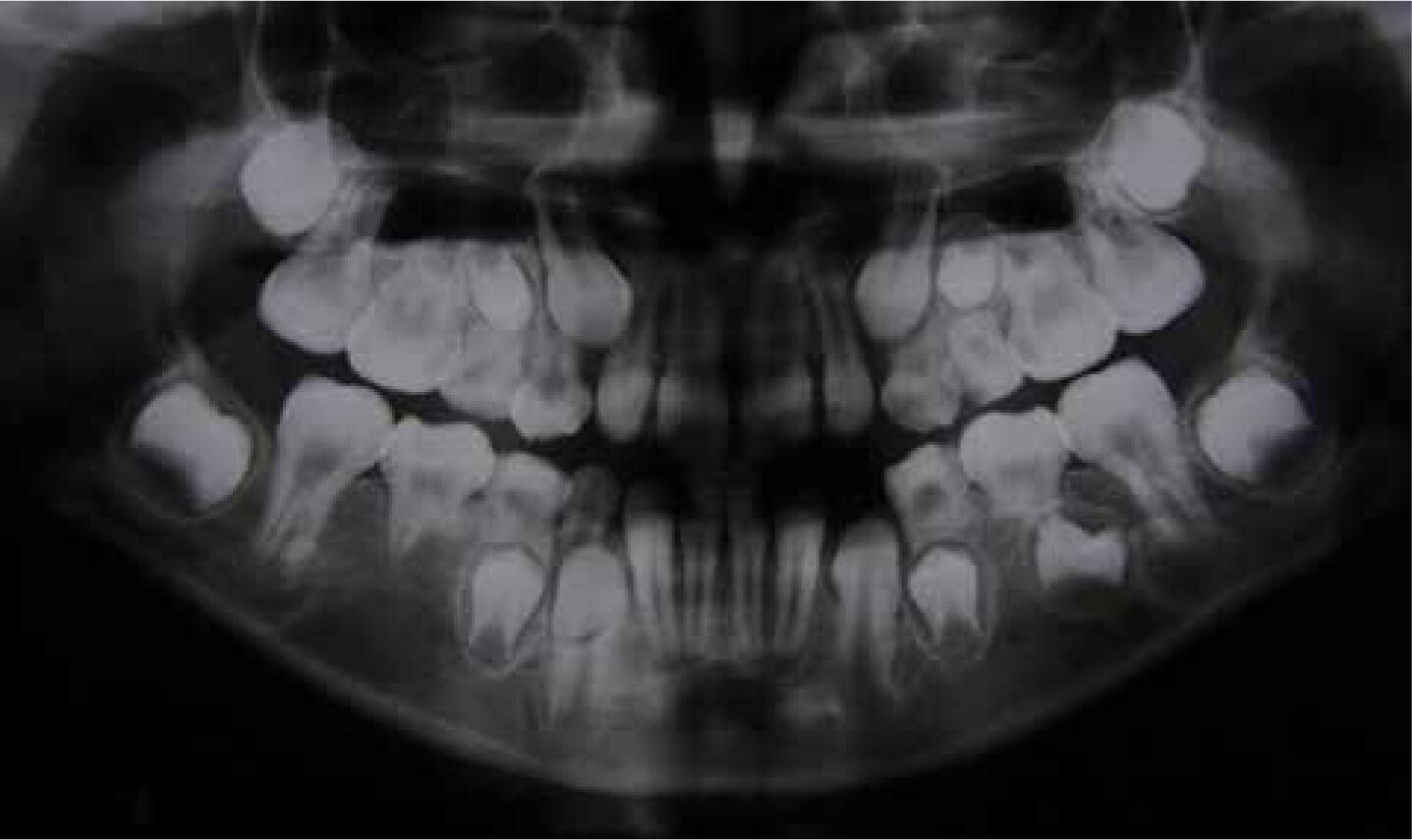
What is Otodental Syndrome? Otodental Syndrome is a rare genetic disorder that affects teeth, hearing, and sometimes eyes. Imagine having teeth that are unusually large and misshapen, combined with hearing loss. This condition, also known as otodental dysplasia, is inherited in an autosomal dominant manner, meaning just one copy of the mutated gene can cause it. The syndrome is linked to a mutation in the FGF3 gene on chromosome 11. Besides dental anomalies, affected individuals often experience sensorineural hearing loss and, in some cases, eye coloboma. Due to its rarity, affecting fewer than 1 in a million people, managing this condition requires a team of specialists.
Key Takeaways:
- Otodental Syndrome is a rare genetic disorder affecting teeth and hearing. It requires a team of specialists for diagnosis and management, and can impact both physical and emotional well-being.
- Dental anomalies like globodontia and hearing loss are key features of Otodental Syndrome. Early detection and multidisciplinary care are crucial for improving outcomes and quality of life.
What is Otodental Syndrome?
Otodental syndrome, also known as otodental dysplasia, is a rare genetic disorder. It affects dental development and hearing. Let's dive into some key facts about this condition.
-
Definition and Synonyms: Otodental syndrome is an autosomal dominant condition. It features enlarged canine and molar teeth, known as globodontia, and sensorineural hearing loss. Other names include familial otodentodysplasia, globodontia, and oculootodental syndrome.
-
Prevalence: This syndrome is extremely rare, affecting fewer than 1 in every 1 million people. It has been reported in families from Europe, China, and Brazil.
-
Genetic Inheritance: Otodental syndrome follows an autosomal dominant inheritance pattern. A single copy of the mutated gene can cause the condition. Both males and females are equally affected.
-
Genetic Cause: The condition is linked to mutations in the fibroblast growth factor 3 (FGF3) gene on chromosome 11q13. This mutation leads to the dental and hearing anomalies seen in the syndrome.
Dental Characteristics of Otodental Syndrome
The dental anomalies in otodental syndrome are quite distinctive. Here are some facts about the dental features of this condition.
-
Dental Phenotype: The hallmark of otodental syndrome is globodontia. This involves the enlargement and malformation of canine and molar teeth, which appear bulbous and lack distinct cusps or grooves.
-
Dental Development: Globodontia affects both primary and secondary teeth, except for the incisors, which remain normal in shape and size.
-
Enamel Defects: Enamel hypoplasia, a defect in enamel formation, is common on the buccal surface of canines. This can increase the risk of cavities.
-
Odontoma Formation: Odontomas, which are odontogenic tumors, often occur in the posterior maxilla and mandible of affected individuals.
-
Dysmorphic Facial Features: Some patients may have facial features like a long face, full cheeks, anteverted nostrils, and a long philtrum. Cleft lip has also been reported in some cases.
Hearing and Vision Issues
Otodental syndrome doesn't just affect teeth. It can also impact hearing and vision. Here are some facts about these aspects.
-
Sensorineural Hearing Loss: Sensorineural hearing loss is common in otodental syndrome. It results from inner ear complications and can appear from early childhood to middle age.
-
Eye Coloboma: In some cases, otodental syndrome is associated with eye coloboma, a hole in the eye that can affect the iris, choroid, optic disc, or retina.
-
Variable Expressivity: The severity of symptoms can vary widely among individuals. Some may have mild symptoms, while others experience more severe issues.
Diagnosis and Management
Diagnosing and managing otodental syndrome requires a multi-disciplinary approach. Here are some key points.
-
Diagnostic Criteria: The dental phenotype of globodontia is diagnostic for otodental syndrome. Molecular genetic testing can confirm the diagnosis by identifying mutations in the FGF3 gene.
-
Dental Management: Managing the dental issues involves regular follow-ups, tooth extractions, orthodontic treatment, and preventive oral hygiene programs.
-
Hearing Management: Regular monitoring of hearing and the use of hearing aids, if necessary, are crucial for improving communication skills.
-
Eye Examination: Regular eye exams are important to detect any ocular coloboma or other eye anomalies. Treatment may be needed if eye coloboma is present.
Family and Psychological Impact
Living with otodental syndrome can affect both the individual and their family. Here are some facts about the broader impact of the condition.
-
Family History: A detailed medical, dental, and family history is essential for diagnosing otodental syndrome. This includes assessing the dental and hearing status of family members.
-
Interdisciplinary Teamwork: Diagnosis and treatment require a team approach involving dentists, orthodontists, audiologists, and ophthalmologists.
-
Complex Dental Conditions: Dental conditions like globodontia and taurodontism can lead to endodontic-periodontic lesions, which may form abscesses and cause pain.
-
Taurodontism: Taurodontism involves an enlarged tooth body at the expense of the roots, leading to an enlarged pulp chamber and displaced pulpal floor.
-
Endodontic Therapy Challenges: Endodontic therapy can be difficult due to duplicated pulp canals in the affected teeth. Multiple extractions and prostheses may be needed.
-
Prosthetic Considerations: Implants may be considered, but the complex dental anatomy requires specialized prosthetic solutions.
-
Functional Prognosis: With appropriate dental treatment and hearing aids, the functional prognosis is mostly good. However, quality of life may be affected by psychological and functional aspects.
-
Psychological Impact: The rarity and complexity of otodental syndrome can have a significant psychological impact. Genetic counseling should be offered to address these concerns.
-
Genetic Counseling: Genetic counseling helps families understand the inheritance pattern, risk of recurrence, and implications for future generations.
Research and Future Directions
Research on otodental syndrome is ongoing. Here are some facts about the current state and future directions of research.
-
Research Activities: Ongoing research aims to better understand the genetic mechanisms and develop more effective management strategies. Newborn screening programs may also be explored.
-
Newborn Screening: While no specific newborn screening programs exist for otodental syndrome, early detection through detailed medical and dental exams can improve management and outcomes.
-
Case Reports: Case reports highlight the importance of detailed medical, dental, and family history examinations in diagnosing otodental syndrome. They also emphasize the need for multi-disciplinary teamwork.
-
Age of Onset: The age of onset can vary. Dental anomalies may appear in early childhood, while hearing loss can manifest from early childhood to middle age.
-
Variability in Symptoms: Symptoms can vary significantly. Some individuals may experience severe dental and hearing anomalies, while others have milder manifestations.
-
Diagnostic Challenges: Diagnosing otodental syndrome can be challenging due to its rarity and symptom variability. Molecular genetic testing is essential for confirmation.
-
Dental Anomalies: Dental anomalies like globodontia, taurodontism, and endodontic-periodontic lesions are pathognomonic and diagnostic.
-
Hearing Loss Severity: The severity of hearing loss can vary. Some individuals may experience high-frequency hearing loss, while others have more profound loss.
-
Ocular Coloboma: Ocular coloboma is a rare feature involving a hole in the eye, which can affect various parts and lead to vision problems.
-
Complex Management: Managing otodental syndrome is complex and requires a multidisciplinary approach. Regular follow-ups, tooth extractions, orthodontic treatment, hearing checks, and preventive oral hygiene programs are essential.
Understanding Otodental Syndrome
Otodental syndrome is a rare genetic disorder marked by globodontia, sensorineural hearing loss, and sometimes ocular coloboma. With less than 1 in a million affected, it's linked to mutations in the FGF3 gene. The condition's hallmark is the unusual enlargement of canine and molar teeth, making dental care complex. Regular dental check-ups, orthodontic treatments, and preventive oral hygiene are crucial. Hearing loss, another significant aspect, requires monitoring and possibly hearing aids. Eye exams are necessary if coloboma is present. The syndrome's variability means symptoms can range from mild to severe. Genetic counseling offers families insight into inheritance patterns and future risks. Though challenging, a multidisciplinary approach ensures better management and quality of life for those affected. Ongoing research aims to improve understanding and treatment options for this unique condition.
Frequently Asked Questions
Was this page helpful?
Our commitment to delivering trustworthy and engaging content is at the heart of what we do. Each fact on our site is contributed by real users like you, bringing a wealth of diverse insights and information. To ensure the highest standards of accuracy and reliability, our dedicated editors meticulously review each submission. This process guarantees that the facts we share are not only fascinating but also credible. Trust in our commitment to quality and authenticity as you explore and learn with us.


